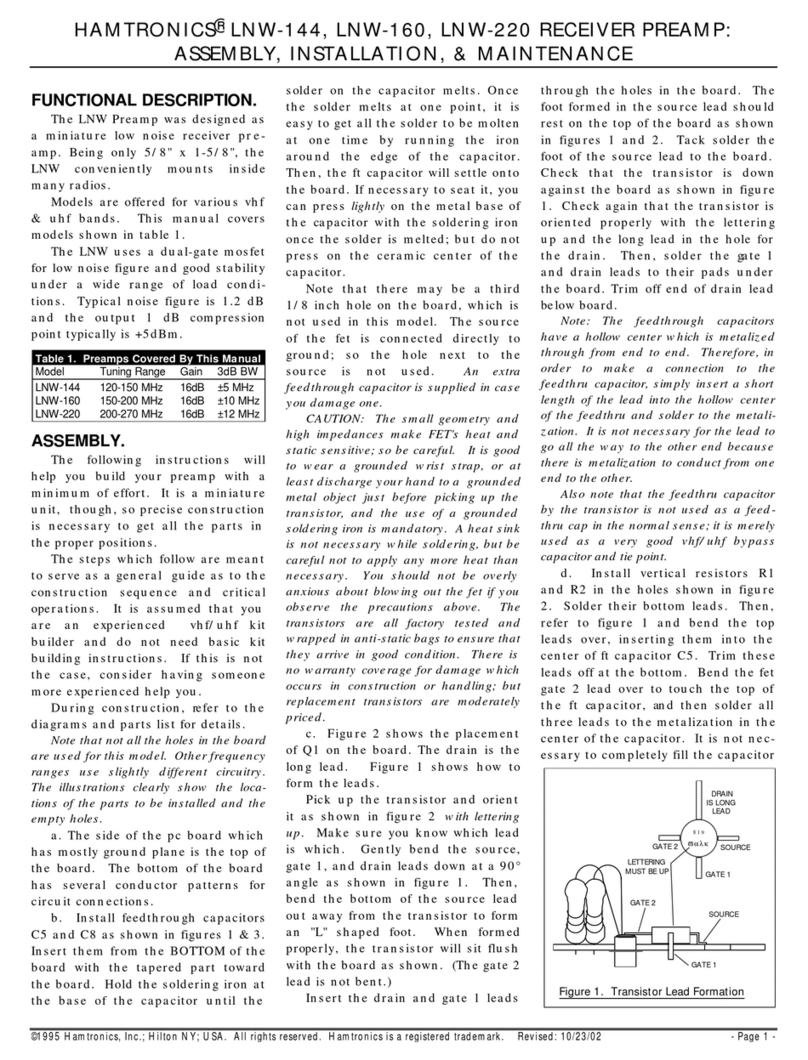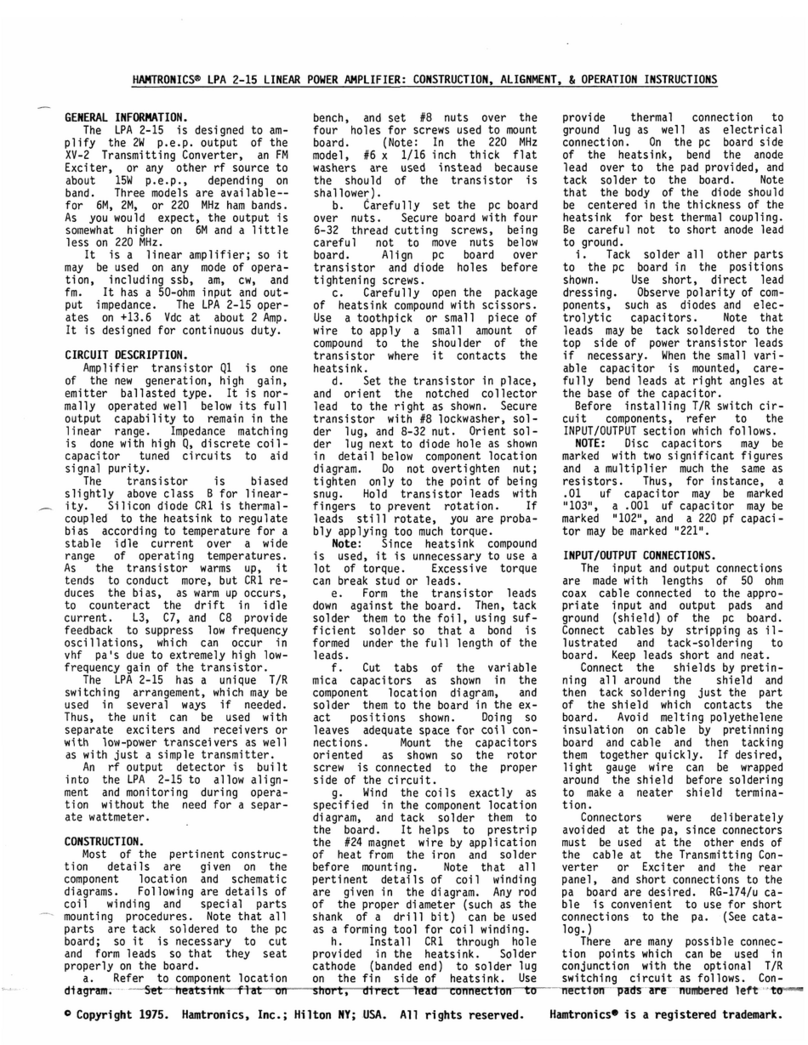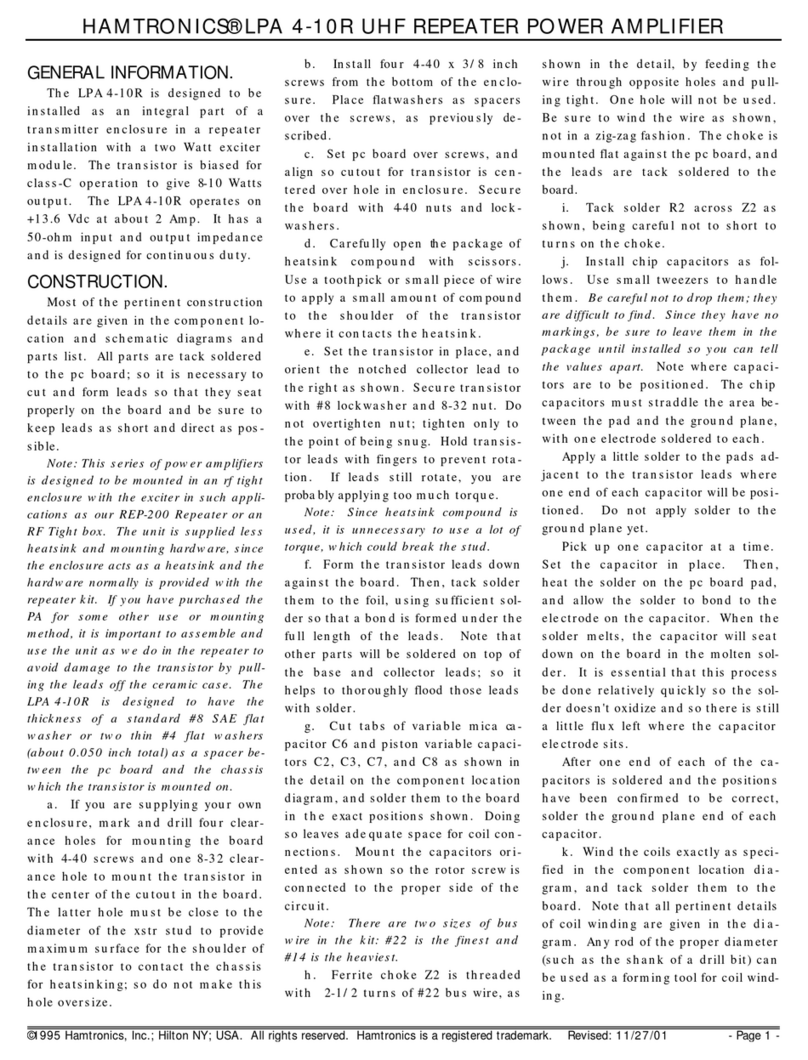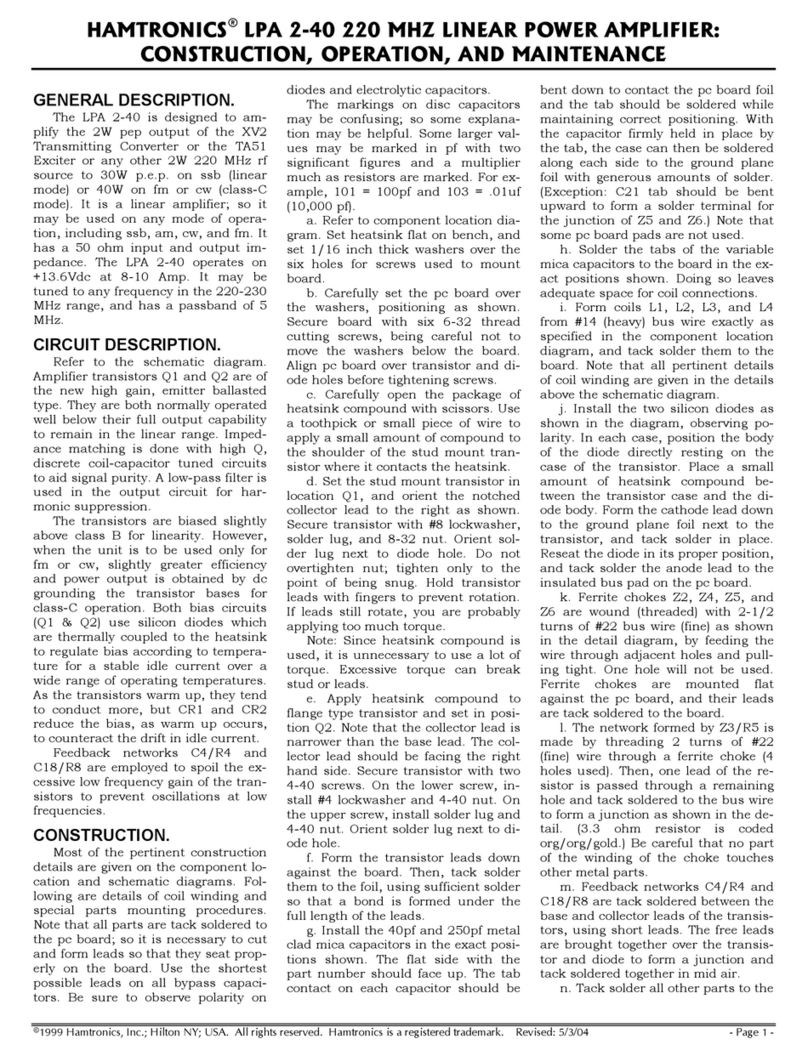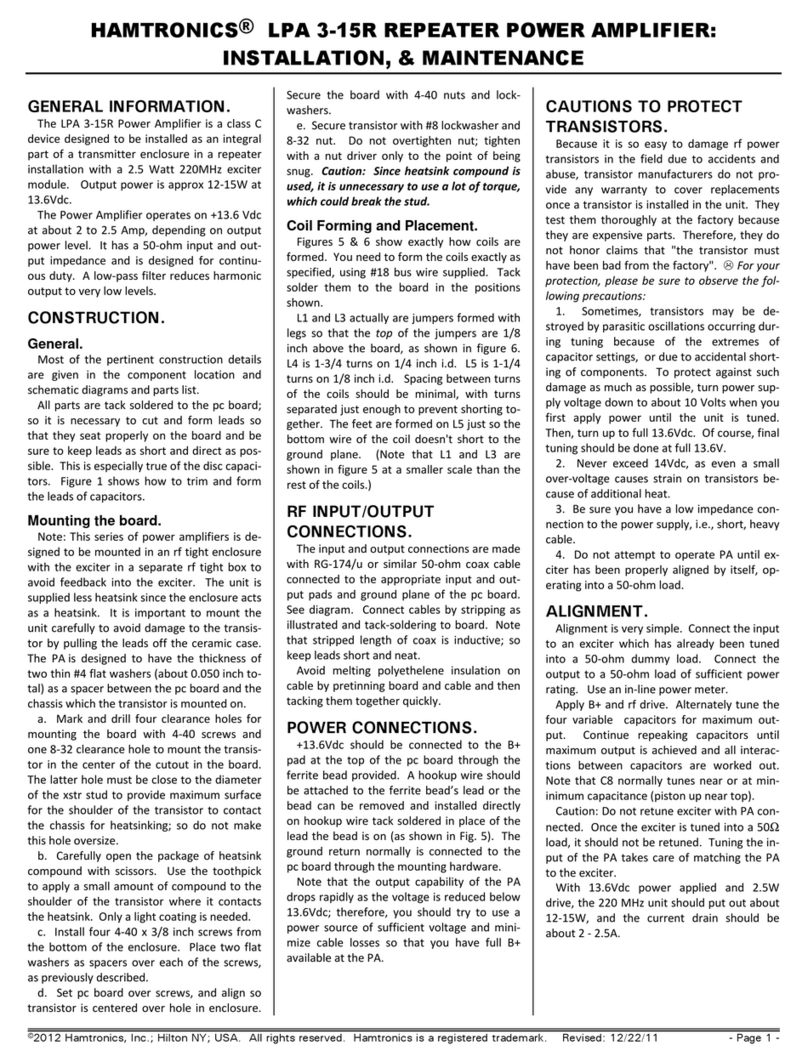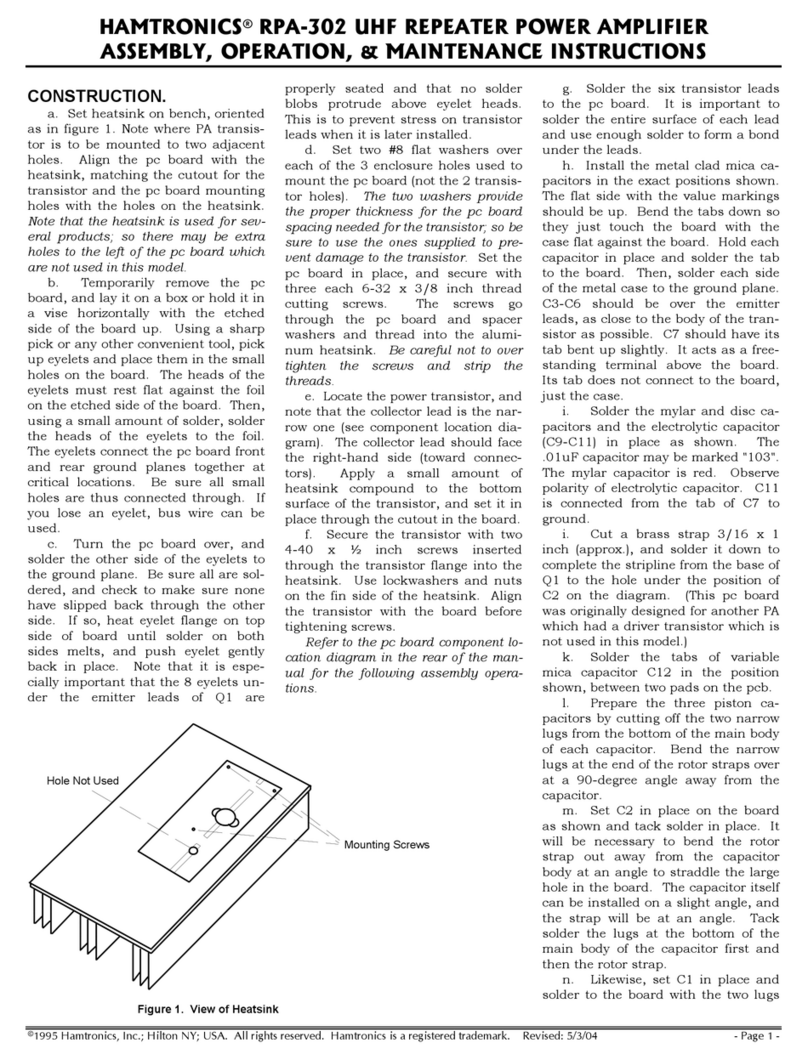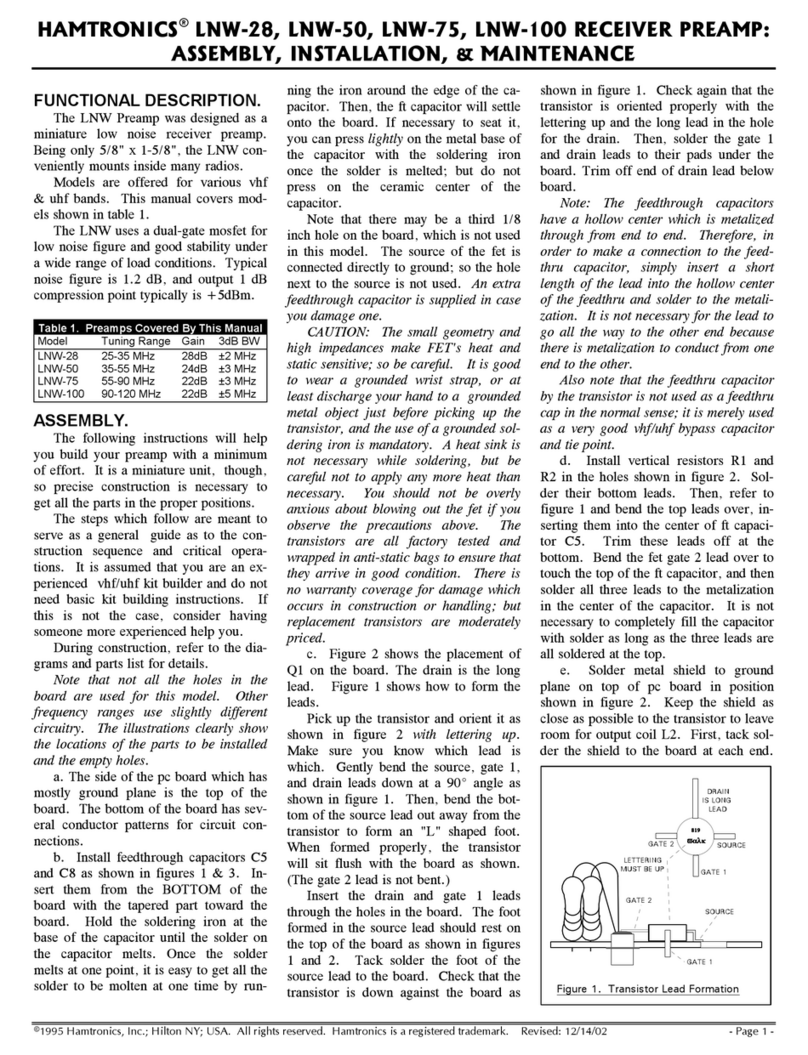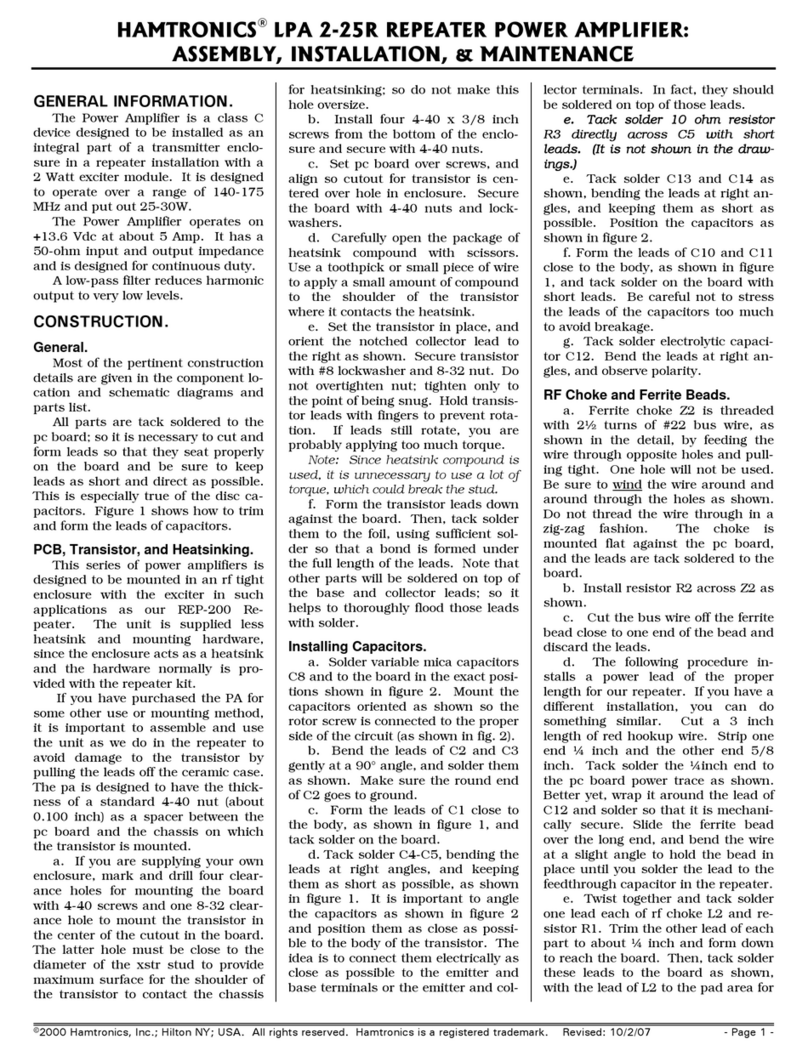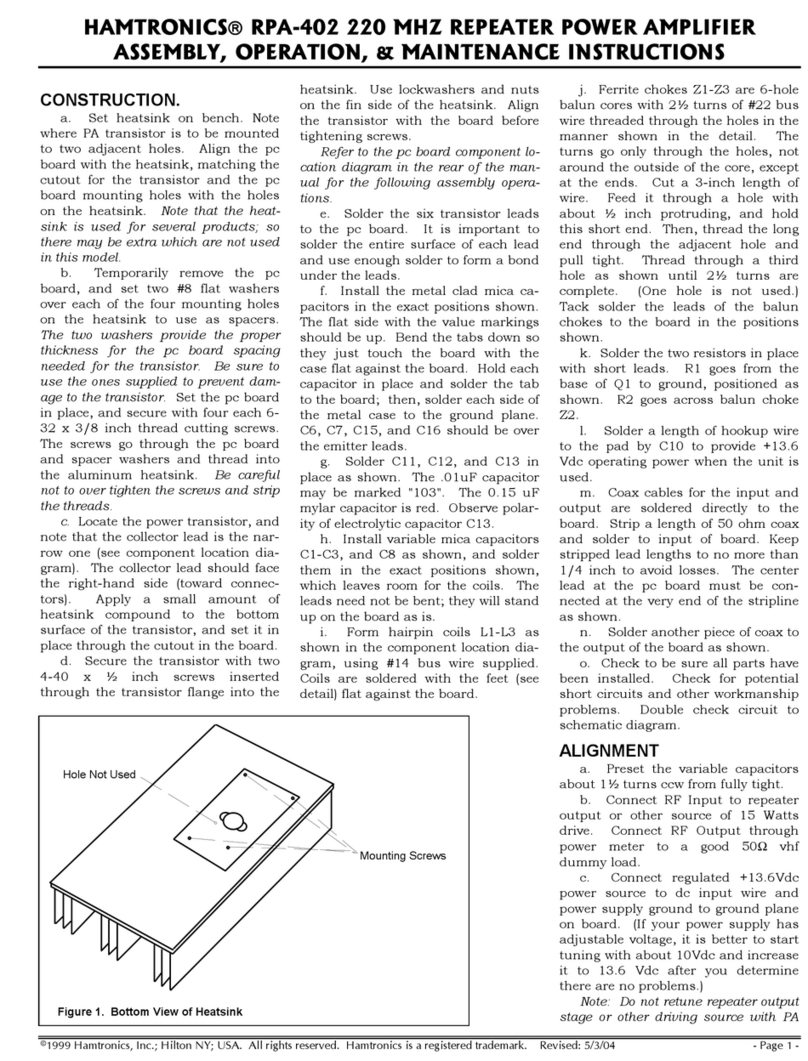
©1999 Hamtronics, Inc.; Hilton NY; USA. All ri
hts reserved. Hamtronics is a re
istered trademark. Revised: 4/22/03 - Pa
e 1 -
DESCRIPTION.
The LNY-( ) series of low-noise pre-
amps employs one of the new genera-
tion diode-protected dual-gate MOS
FET devices which are designed ex-
clusively for use in the vhf & uhf
bands. The 1 dB compression point
for these preamps is approximately
+5dBm. Surface mount technology is
used to obtain minimum noise figure
and best stability.
The preamp is connected in series
between the antenna and the receiver
to effectively lower the noise figure of
the receiver front end, allowing weaker
signals to be received. The LNY series
was designed for operation in 50 ohm
systems; however, they will operate
satisfactorily on 75 ohms as well.
INSTALLATION.
MOUNTING. The preamp can be
mounted to any flat surface with
standoffs and 4-40 screws through
the two mounting holes. The ideal
location is in the chassis with the re-
ceiver.
Complete shielding of the preamp
is not required. However, some care
should be given to selection of the
mounting location with regard to
feedback from adjacent receiver cir-
cuits or rf pickup if mounted very
close to a transmitter circuit. Because
the unit is small, make sure that it
isn't installed tight against the rf am-
plifier or first mixer of the receiver to
minimize feedback effects.
For best results, in a receiving sys-
tem when antenna is not also used for
transmit, preamp can be mounted
right at the antenna. Install the pre-
amp in a project box and mount the
box on a flat aluminum panel U-
bolted to the antenna mast. Then,
caulk around base of preamp and
around B+ and coax connectors to
weatherproof unit. Silicone sealant is
good for this purpose.
RF CONNECTIONS. Antenna and
receiver connections are made with
special rf type RCA plugs to the input
and output jacks on the preamp. The
RF INPUT must be connected to the
antenna, and the RF OUTPUT must
be connected to the receiver input.
CAUTION: The preamp cannot be
used on a transceiver unless you have
a way to connect it only in the receive
rf path.
Use good quality low-loss coax to
maintain low noise operation. Re-
member that any loss in coax from
antenna cannot be made up later in
the preamp; it adds directly to system
noise figure.
Note that special rf type RCA plugs
with good cable clamps are available
from us (model A5) as an accessory.
It is very important to use the proper
plugs and make sure the coax pigtails
soldered to the plugs are as short as
possible. Attempts to use a different
type of connector or to solder coax
directly to the board should be
avoided because it would degrade per-
formance.
POWER CONNECTIONS. Power
for the unit must be filtered +10 to 15
Vdc. Current drain is about 10 mA.
Solder positive supply wire to solder
pad E1 on the board. Many times,
the power supply ground connection
can be made through the coax shield.
Otherwise, connect a separate power
supply ground wire to the ground
plane on the pc board.
If you have a receiver which feeds
+12Vdc up the antenna cable to a
preamp, rf choke L3 can be added to
the LNY-( ) Preamp to allow power to
be taken from the coax. (This choke
is not supplied.) Note that such an
arrangement can affect the rf per-
formance of a preamp; so we recom-
mend you use a separate piece of
hookup wire to provide power when-
ever possible.
/
//
/CAUTION: Solid state amplifiers
can be damaged by large voltage tran-
sients and reverse polarity. Although
protection is provided in the preamp,
avoid such conditions as a matter of
principle. Special care should be
taken to install reverse transient ab-
sorbing diodes across any inductive
devices, such as relays. If the preamp
is connected to an antenna used for
transmit as well as receive, be sure
that the unit is connected only in the
receive path and that the coax relay
has sufficient isolation to avoid cou-
pling large amounts of rf to the pre-
amp.
HAMTRONICS® LNY-( ) RECEIVER PREAMP: INSTALLATION,
OPERATION, & MAINTENANCE
MODEL
TUNES RANGE
TYPICAL
NOISE FIG.
GAIN
MIN. 3DB
BANDWIDTH
LNY-28 24-37 MHz 0.6 dB 26 dB ±2 MHz
LNY-50 35-63 MHz 0.6 dB 24 dB ±3 MHz
LNY-100 88-108 MHz 0.6 dB 22 dB ±5 MHz
LNY-120 108-140 MHz 0.6dB 22 dB ±4 MHz
LNY-137 130-160 MHz 0.6 dB 18 dB ±4 MHz
LNY-146 130-160 MHz 0.6 dB 18 dB ±4 MHz
LNY-166 150-180 MHz 0.6 dB 16 dB ±5 MHz
LNY-220 195-240 MHz 0.7 dB 18 dB ±5 MHz
LNY-400 360-440 MHz 0.8 dB 19 dB ±5 MHz
LNY-450 400-470 MHz 0.8 dB 18 dB ±5 MHz
Note: Units are aligned to center of band.
WHEN DOES A PREAMP HELP?
It is tempting to hope that a pre-
amp can make any receiver more sen-
sitive in any situation. It is important
to understand what happens when
ou
add a preamp before a receiver.
A preamp can help overcome a defi-
ciency in receiver sensitivity
only
if
the noise figure is poor, either due to
the design or because a lossy filter
or cable adds to the noise figure.
For instance, a preamp up at the an-
tenna can overcome the effects of
coax cable loss.
However, adding gain in the front
end raises all signal levels; so, in ef-
fect, every dB of gain added over-
rides 1 dB of i-f selectivity or
dynamic range. Therefore, adding a
preamp can result in intermod or de-
sense. The only way to know is to try
it!
